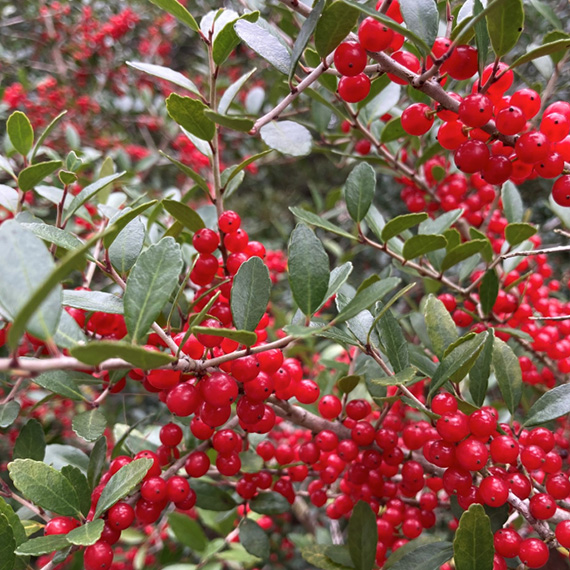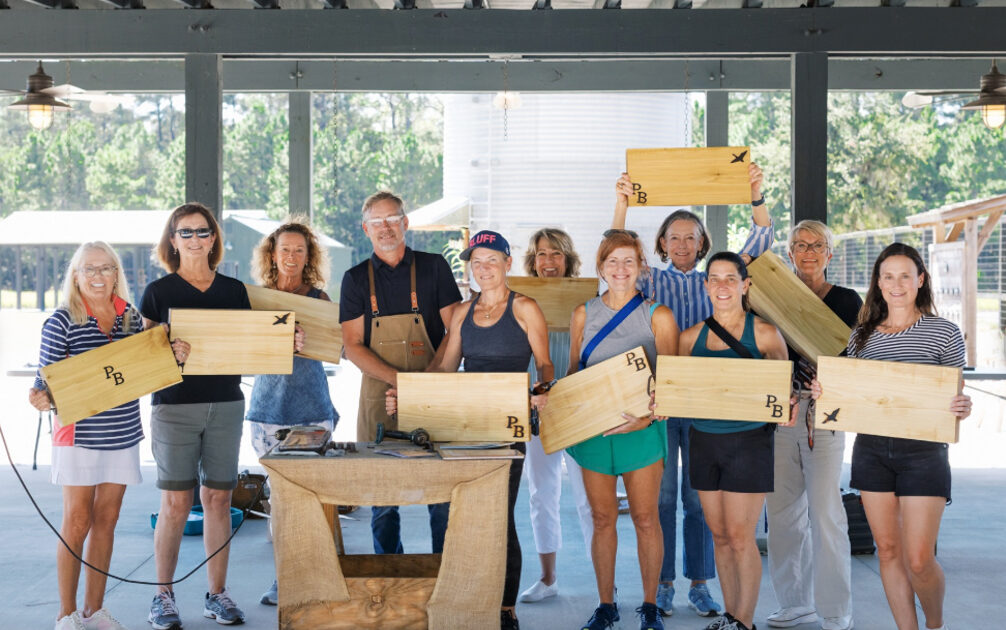Palmetto Bluff Real Estate Company Sales Office
Office Hours
Monday-Friday 9am - 5pm
Saturday 9am - 4pm
Sunday 12 - 4pm
Saturday 9am - 4pm
Sunday 12 - 4pm
Beaufort County is home to roughly a dozen species of milkweed, three of which have been documented growing wild at Palmetto Bluff.
The genus Asclepias earned the common name “milkweed” from the sticky, milky-white substance that is excreted from broken parts of the plant. This substance is toxic if ingested by people and dogs, but monarch butterfly caterpillars have adapted to consume the leaves and toxins found within this plant. In return, their diet makes the young monarchs unpalatable to birds and other predators. However, monarch populations have been in decline, as a result of a loss of habitat and loss of milkweed. This downward trend in monarch sightings and the joy people experience from watching them flit around the garden has inspired many homeowners to plant milkweed in their flower beds. This unique addition to the garden provides food for both the caterpillars and the adults.
The efforts to attract monarchs and help their population has increased the availability of some species of milkweed at local nurseries. Butterfly milkweed (Asclepias tuberosa) is one of the most common species sold in the Southeast, while common milkweed (Asclepias syriaca) is more prominent in northern plant nurseries. Other species commonly sold at nurseries include whorled milkweed (Asclepias verticillata) and swamp milkweed (Asclepias incarnata).
There is one more species of milkweed that has become commonplace at nurseries, and it is known as tropical milkweed or blood flower (Asclepias curassavica). This species, native to Central and South America, has become highly popular in North America due to its more evergreen behavior and ease of cultivation. However, this has been connected with an increase in monarchs becoming non-migratory and staying year-round in places with an abundance of tropical milkweed. It has also been linked to some monarch pathogens becoming more prevalent as the pathogens would typically die back with the plants in winter, but this is not the case with tropical milkweed. The easiest and best solution is to plant native species, as these plants will die back close to winter, killing the pathogens along with them, and the monarchs will be more inclined to migrate.
Residents of Beaufort County may be interested in planting any of the following native species of milkweed:
• Aquatic Milkweed (Asclepias perennis)
• Butterfly Milkweed (Asclepias tuberosa) – documented at Palmetto Bluff
• Carolina Milkweed (Asclepias cinerea)
• Clasping Milkweed (Asclepias amplexicaulis) – documented at Palmetto Bluff
• Fewflower Milkweed (Asclepias lanceolata)
• Longleaf Milkweed (Asclepias longifolia)
• Michaux’s Milkweed (Asclepias michauxii)
• Pineland Milkweed (Asclepias obovata)
• Pinewoods Milkweed (Asclepias humistrata) – documented at Palmetto Bluff
• Savannah Milkweed (Asclepias pedicellata)
• Swamp Milkweed (Asclepias incarnata)
• Whorled Milkweed (Asclepias verticillata)
%GALLERY%

Warm, fragrant, and deeply comforting, Chef Beth’s Southern Sausage & Sage Stuffing is a holiday classic that brings together rich pork sausage, fresh herbs, and toasted bread for the ultimate savory side dish. Studded with green apples and aromatic vegeta...

As December settles over Palmetto Bluff, it brings softer light, cooler mornings, and the natural beauty of native evergreens and winter berries that define the Lowcountry landscape. Palmetto Bluff Conservancy’s Education and Outreach Manager, Aaron Palmier...

In 2025, Palmetto Bluff welcomed new neighbors and old friends, groundbreakings, and long-awaited openings. From inspired Club gatherings and elevated programming to the creation of our latest golf course, the year was defined by connection and excitement for ...

There is something serene about waking up to shimmering water, the stillness of the woods, or the sweep of marsh and sky right outside your window. Even without stepping outside, science shows that simply seeing nature from home can meaningfully improve mental...

The Ultimate Choice: Building vs Buying a Home in Palmetto Bluff For those searching for Palmetto Bluff homes for sale, this common question often arises: Should you choose an existing residence, or embrace the opportunity to build your own? While a complet...

A Complete Guide to South Carolina Winter at Palmetto Bluff South Carolina's winter is unlike any other on the East Coast. While many travelers search for “South Carolina winter” expecting cooler temperatures and limited outdoor options, the Lowcountry revea...

River Road: Where Lowcountry Beauty Meets Elevated Everyday Living Tucked gracefully between Wilson Village and Moreland Village, River Road is one of Palmetto Bluff’s most immersive communities. It's where the pace of life seems to soften, classic Southern ...

Sunday, December 14 | 9am to 1pmVillage GreenThe season’s most festive farmers market, the Holiday Farmers Market, comes to Wilson Village on Sunday, December 14, from 9am to 1pm. All are welcome to visit and experience the magic of holidays at the Bluff. The ...

Tucked amid whispering pines and overlooking a tranquil water trail, 11 Lyonia Street is where Lowcountry charm meets modern artistry. The newly built residence redefines Southern living with a balance of craftsmanship and calm. This is a home that feels both ...

The holiday season in the Lowcountry brings crisp air, oaks draped in twinkling lights, and laughter drifting from homes where families and friends gather once again. At Palmetto Bluff, the holidays are more than just a season; they’re a feeling of togethernes...
Learn about the Palmetto Bluff Conservancy and how we keep the vision of our land in place.
On land or water, there is an ever-evolving variety of activities.
We do not attempt to independently verify the currency, completeness, accuracy or authenticity of the data contained herein. All area measurements and calculations are approximate and should be independently verified. Data may be subject to transcription and transmission errors. Accordingly, the data is provided on an “as is” “as available” basis only and may not reflect all real estate activity in the market”. © [2023] REsides, Inc. All rights reserved. Certain information contained herein is derived from information, which is the licensed property of, and copyrighted by, REsides, Inc.